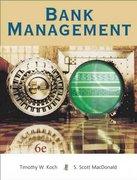



Explain these attachments
2) Consider the following demand and supply functions: Qi =24-4P, demand Q;=-6+2E,_, P, supply and expectations generator E, P, = P._ a) Calculate the long run price and quantity in this market. Justify your answer. b) Is this system a stable or unstable Cobweb model? Justify your answer. c) Beginning at P, =4 and Q; =8, calculate three years of prices and quantities in this market. Suppose instead that the demand and supply functions are: Q; =24-2P, demand Q;=-6+4E,_P, supply d) Repeat questions a) through c) where in c) part you begin with P, =4 and Q, =16.The firm operates a technology that uses capital, labor and public goods (as roads and other infrastructure) to produce. Total output is given by: Y = =GKN1-a-8 The firm must pay for labor and capital, but its use of public goods (G) is free of charge. To be clear the firm does not choose how much G to demand. . The government must finance investment in public goods using lump sum taxes T. Public goods each period are given by G = g/ where g is a constant. . Population grows at a constant rate n. So that N = (1+n) N. (a) What is output per-worker in this economy? (b) Find the per-worker capital accumulation equation. (c) Show in a diagram how to determine the steady state level of capital. (d) Interpret the effect of an increase in g in this economy. Show it in a diagram. (e) How does it relate to a change in z in the model covered in class? What does this tell you about the role of the government in the economy.4. You are a U.S.-based company that just imported some raw materials for 6200,000 from France. You owe (200,000 to the French supplier in one year. You are concerned about the amount in dollars you will have to pay for this purchase in one year. Suppose: Current Spot exchange rate is $1.50/E One-year Forward exchange rate is $1.25/( U.S. interest rate is 3.00% per year Interest rate in Europe is 4.00% per year Call option with strike price of $1.30/6 is available with premium of $0.1/6 Put option with strike price of $1.30/6 is available with premium of $0.2/6 You forecast that the spot exchange rate in one year could be $1.20/6, $1.30/6, $1.40/6, or $1.50/6 with equal probability. a. Suppose you decide to do nothing. In one year, what will be the dollar cost in the four possible scenarios? (2 points) b. Explain in detail how you can lock in the exact dollar cost of this purchase by using forward contract. Specifically, do you take a long or short position in a 6 forward contract and for how much amount? What dollar cost can you lock in with this strategy? (4 points) c. Explain in detail how you can lock hedge your position using money market hedge. Write down the detailed steps one needs to take to implement the money market hedge and calculate the dollar cost in each of the four scenarios. (6 points) d. Explain in detail how you can hedge using option. Should you take a long or short position in put or call options on euros? Write down whether you will exercise the option (i.e., is it in the money, at the money, or out of the money?) and calculate the dollar cost (including option premium you paid) in each of the four possible scenarios. (6 points) Hint: at the end, provide a table that summarizes the dollar cost in each scenario like the following: State Future spot rate Cost in Euro Unhedged Forward Money Market |Option 1 1.2 200,000.00 2 1.3 200,000.00 3 1.4 200,000.00 4 1.5 200,000.00Risk Premium 0.0026 E[R] (note R = r-ri) 0.0026 Hints: The alpha and beta come directly from the regression coefficient estimates. The weekly variance of returns can be calculated as the Total Sum of Squares (SS) divided by the total degrees of freedom (df). . The residual standard deviation can be calculated from the Standard Error of the regression (in the regression statistics box). Calculate the variance of the residuals as the square of residual standard deviation. . Finally, calculate the risk premium using the expected return equation: E[R.] = Bix(Market Risk Premium). b) Step 2: Calculate the covariance matrix of the excess returns. Complete the matrix below. Remember, the index model makes a simplifying assumption about the covariances, so we can use the formula: COV(n, r,) = BB,OM] S&P500 AIG CITI S&P500 AIG CITI c) Now we have all the information we need to calculate the initial position in each security. Note: We will ignore systematic risk at first, to make things easier, and we'll account for it later in the process. Compute the initial position in each security, and scale them so that these weights sum to one. What are the weights? (Hint: Steps 1 and 2) d) Using the weights you calculated in step (c), calculate the weighted average alpha, the weighted average beta, and the weighted average residual variance. (Hints: Steps 3, 4, and 6) e) Now that you know the weights for the individual assets, calculate how much money you should put in the active portfolio. [Hint: see step 5 from Bodie, Kane, and Marcus, page 266]














